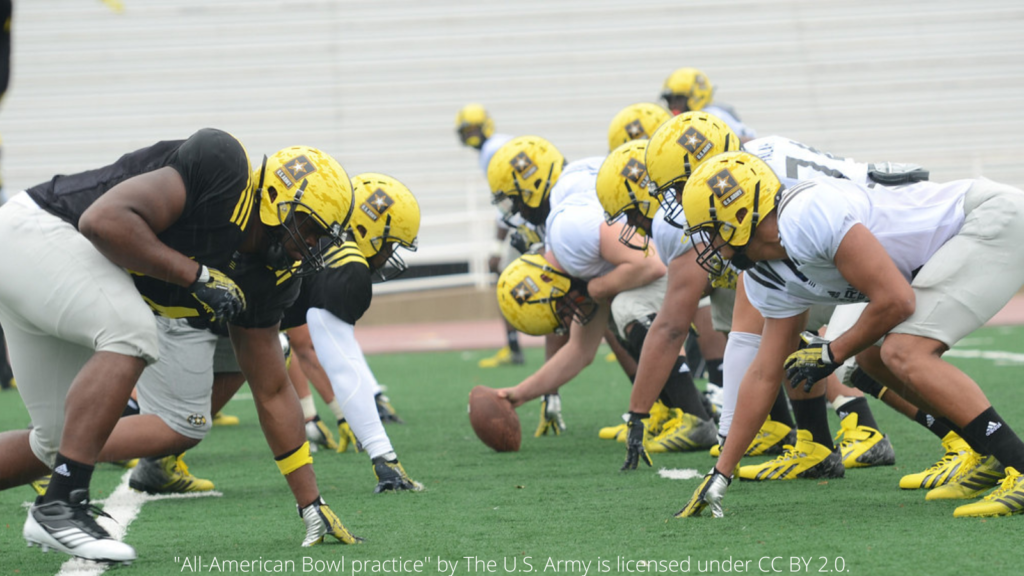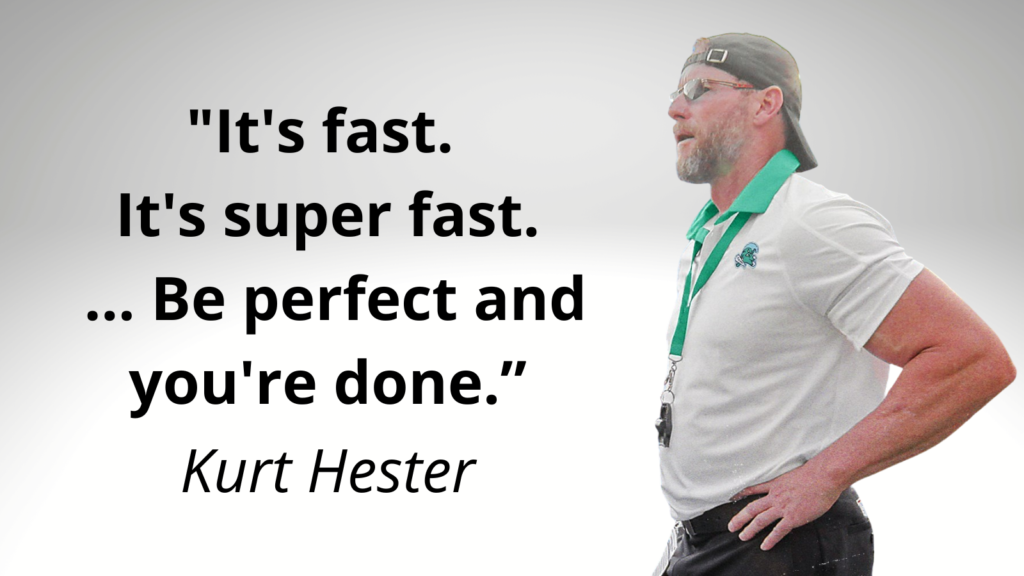
The Practice Format made popular by Chip Kelly
No Sweat Thursday and Fast Friday Practice Format
By Keith Grabowski
Made popular by UCLA Head Coach Chip Kelly, No Sweat Thursdays and Fast Fridays are being used more and more by college teams as well as high school teams looking to optimize their players game day performance. The basic idea is instead of doing the traditional no padded walkthrough the day before the game, is instead to do it two days before the game. For high school teams that usually play on Friday, they would be doing their walk through on Wednesdays, and for colleges that usually play on Saturdays, they would be doing their walk through on Thursdays.
That leads to the day before the game, which now is a full speed, no contact scripted practice. The idea behind this type of schedule is for players minds and bodies to remain sharp and active the day before the game instead of the conventional day before walkthrough.
To gain insight on this, two high school coaches, two college coaches, and a training load expert shared their thoughts.
Kirk Fridrich – Union High School
Perennial powerhouse in Oklahoma, head football coach Kirk Frederick of Union High School explained that his athletes enjoy the opportunity to have no pads, recovery and mostly mental practices on Wednesdays, allowing them to be more focused for full speed practices on Thursdays before games.
On Thursdays (the day before their game) Fridrich and staff ramp up just beyond a walk-thru. They have a team period with 10-12 plays at maximum speed. They don’t want to overdo it, but studies he’s read indicate that the central nervous system is engaged by this and allowing it to awaken after taking a day off.
That means Wednesdays are a day with the pads off and a true walk-thru. It’s something Fridrich notes that the linemen love. He explained, “I think that it’s caused our kids to be a lot more focused on that Thursday, the day before a game, and it’s really helped us out.”
Fridrich has heard a lot of coaches talk about that benefit, whether it be the high school level where it’s Thursday, or the college level where it’s Friday. That practice is very crisp and focused.
On Wednesdays the focus for the team becomes very mental. The offense and defense goes over their checks and there’s an emphasis on situational football, especially third down.
Just because it’s a walk thru doesn’t mean that players won’t “loaf,” and its something the staff pays attention to. Fridrich noted, “We’re tracking their mental effort. A lot of times we talk about loafs in practice where guys aren’t giving effort. Well, there’s also mental loafs as well that we can grade on kids and talk to our kids about not having a mental breakdown.”
Fridrich feels this format aids the coaches in their game planning process as well. In putting the focus on the mental side, it becomes clear if the players are not sharp on a certain play or adjustment, and they can scratch it off their game plan if necessary.
It should be really sharp on that Wednesday and we just kind of pushed the clock a little bit. You want them to be ready and crisp and do those things on that Thursday.
The players find additional benefits in being able to do more recovery type of activities in the training room. That ranges from more stretching and foam rolling to recovery boots and ice baths.
Fridrich feels the benefits really become evident after looking at it over a four or five week time period. It’s playing the long game in that they’re going to be a lot fresher towards the end of the season.
The format that union uses a 45-50 minute session on their “no sweat” day. Fridrich said, “We’ll get into some O and D different situations, game situations. We use that time to start talking through some things. Again, building on a process, we know you can’t cover everything, but over a time period, we really try to look at being the best when it gets to the playoffs. So it might be a Hail Mary situation. That might be what are the three downs before the half that you covered that week and you kind of review. Or it could be something a whole lot more important that you’re talking about a goal line route combination that you can kind of walk through and talk through, two point place, those kinds of things.”
Their “fast” day is about an hour long. They really emphasize to their players to go at max speed. While they won’t be getting anywhere near the reps of a typical practice day, they want their central nervous system getting printed for game day after having the previous day off physically.

Jeff Conaway – Shiloh Christian
Arkansas powerhouse and state champion Shiloh Christian head coach Jeff Conaway has their “fast” practice on Thursday mornings which lengthens the recovery time after a max speed practice. At Shiloh they refer to it as “Sprint Through Thursdays.”
In that practice he separates special teams, offensive and defensive teams, and has limited snaps or time for each, focusing on sharp, polished play.
Of the Sprint Through Thursday, Conaway said, “I think in our program where we really try to maximize our Thursday. We know and understand that this is the day before the game, and that practice needs to be very sharp. And so our word of the day, our core value on Thursday is “details,” and we want to drive it into our players head, that needs to be the sharpest, and most focused practice of the week. We want to do it in a way in which really drives those details.”
Conaway remembers being frustrated by how to do a Thursday practice prior to this format. “I didn’t know how to do it. Do we wear helmets and shoulder pads? Do we just walk through? Do we run through? It seems like we’ve got the scout team screwing this play up or maybe one of our starters messing this play up.” Those mistakes and lack of focus inevitably led to longer Thursday practices. Overall, it was something that Conaway did not find productive.
Sprint Thru Thursday start at 6:20 am with the players in their flex lines for attendance with the buzzer going off at 6:30 and the players executing a very fast flex period. The periods are shot on this day ranging from one to six minutes with the total practice being 16 periods. Every unit is covered and an emphasis is put on situational football.
Conaway’s practice template can be downloaded below.
Conaway concluded, “I feel like it keeps everybody focused, everybody’s running around at the very fast pace because they know that the periods are very short. And we’ve been very pleased with not only the way those practices have gone, but also the way that we’ve been able to improve our overall team play on Friday nights because of that practice.”
DJ Calendar – Catapult Sports Director of Emerging Markets
When Chip Kelly was at Oregon, they were a Catapult client, and he still is at UCLA. Much of the creation of this practice format was based on an understanding of periodization.
One of the hot button topics is periodization. Basically, that would be looking at your practices over the course of a week, over the course of a month, over the course of the season.
Periodization is about building in a cadence or a tempo that ensures the athletes aren’t overtraining and they aren’t under training. It’s about having an understanding of how players are trending throughout a week or throughout a month so that they’re at their best when their best is needed, whether that’s the game, whether that’s playoffs whether that’s a bowl game. Whatever that ultimate goal is, having this ability to monitor understanding based on what the output actually looks like and then starting to build out the plan and be a bit smarter and more intentional with the approach is the ultimate goal.
Kurt Hester – Strength and Conditioning Coach, Tulane
Hester has worked with this format and studied it extensively. He believes there is definitely a right way to use the practice format. He also se how coaches easily stray from it which defeats the purpose. Hester said, “The thing is, when you go Fast Friday, you have to really control the reps. So what happens with a lot of coaches? They’re not happy with, oh, we didn’t run that play right over again.”
Hester noted that each player really shouldn’t have any more than twelve reps.It should be fast and done and they’re done. The objective is to get on and off the field in less than an hour. He recommends if that can’t be abided by, then to utilize the “old school” format taking the day before the game as the mental day with a walk thru.
Hester explains how it works. “The Fast Friday with super compensation is great, I like it. But again, it has to be really controlled and monitored. The problem is a lot of coaches is you play on Saturday and then they want to come in and watch film and they want to do what they call a flush workout. There’s no such thing as flushing. You don’t have a build up of lactic acid from a game. You have built up of trauma after a game so there is no flush. An athlete’s beat to hell and back so you’re not flushing anything out.”
It is completely a walk through. Not a run through without pads. It’s a walk through.
Coach Hester believes that this practice format is difficult to utilize with a team that plays a lot of two-way players because they will end up having too many full speed reps on the day before the game. If that could be limited for those two-ways then it could work. In general, he suggests the traditional walk-thru day on the day before the game.
The body is traumatized from getting pounded on. I’ve always been in favor of Sunday off, but most coaches won’t do that so they can come back and get an effective day in the wait room on Monday. But usually that doesn’t happen because they want to give Monday off because they can have a day off during the week. So we end up having to train on Sunday, which I don’t like. But when you have a no Sweat Thursday, you shouldn’t lift at all. It’s a complete shutdown of the central nervous system. So I have to go typically on Sunday and Wednesday are my two training days, my two lifting days because of trying to super compensate from Friday to Saturday.
On the Fast Friday practice, he emphasized, “It’s fast. It’s super fast. Like you go and then you’re done. Be perfect and you’re done.”

Hester cautions against the common coaching practice of adjusting ideas to fit their own purposes. He said, “I think if you got to look at the science behind things too, and how that works, not just, well, these guys did it, it sounds pretty cool, we’ll do something like it, I’m going to modify it for my team. There is an exact purpose behind it.”
The practice format as designed has science behind it, and starting to modify it can negate the scientific advantages.
Noel Mazzone – Offensive Coordinator, New Orleans Breakers
Noel Mazonne, offensive coordinator and quarterbacks coach for the New Orleans Breakers used this format when he was at the college level. For him, Fast Friday practices really set the tone for game day.
It starts by slowing things down and as Mazzone refers to it, “sweeping the corners.” They are able to go over some of the fine situations and walk through some scripted drives with various situations, but it is a very low impact day.
Mazzone gave a nod to Chip Kelly on the origin of this format. “And Chip’s whole thing was, which he did obviously tremendous study into this, was that the neurological system, you can’t have your guys be still for 48 hours and expect them to go out after the first kick off, be at full tilt. All right? So we need to break a really good sweat 24 hours before kick off. So we kind of want to rest them a little bit on Thursday, take it off their legs, low impact day, total mental stuff, go through all our situational. Then Friday it is. Freaking balls to the wall. Now we’re rolling on Friday, it’s fast Friday. Everything we do is full speed. We’re finishing now, we’re not out there very long, 45 minutes to an hour maybe.”
Can Fast Friday work for your team?
The short answer is yes, it can work. The caveat is that it must be adhered to in the length of practice 45-55 minutes, full speed reps, and limited reps. 12 reps is the recommendation for each player. If the need is to do more than this then sticking to the traditional walk-thru on the day before is recommended.
The benefits are certainly there. Coaches who have used this format as prescribed have seen the advantages it gives their teams over the course of the season. Having a mentally fresh and focused team that is primed and ready to go fast under the lights is certainly the goal regardless of how a practice week is structured. Understanding objectives for the team as well as the science is the key to making the right decision.
DOWNLOAD: Jeff Conaway’s Sprint Thru Thursday Template
Related Coach and Coordinator Podcast Episodes:
Noel Mazzone – Offensive Coordinator, Arizona Wildcats
La Tech’s Kurt Hester Shares Knowledge on Strength, Conditioning, Movement + Practice


